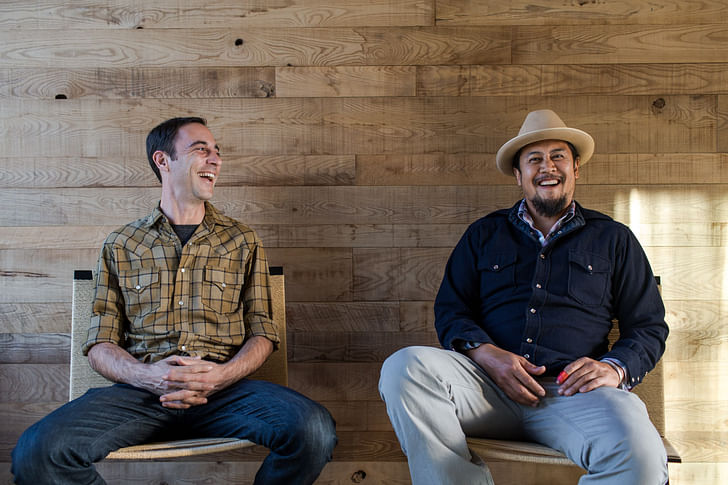

D.U.S.T, based out of Tucson, Arizona, is a multidisciplinary design firm comprised of architects, craftsmen, artists, and designers that focus their practice in the master builder tradition. Founded by Cade Hayes and Jesus Robles, two desert natives, their work intimately roots itself to place, linking knowledge of local traditions to architecture and the building process.
Their Tucson Mountain Retreat was recently featured in Netflix's US debut of The World's Most Extraordinary Homes, hosted by Piers Taylor and Caroline Quentin. For this week's Small Studio Snapshot, I had the pleasure of speaking with the two about their experience on the show, and working out in the desert.
How many people are in your practice?
Currently two, though it ebbs and flows with the projects we have in front of us.
Why were you originally motivated to start your own practice?
It was time and we were ready.
Desire to be free and control of our time and lifestyle.
The Tucson Mountain Retreat was also an opportunity on the horizon that gave us the impetus to jump.
What hurdles have you come across?
Your work was recently featured on the Netflix show "The World's Most Extraordinary Homes." What was that like?
Not sure exactly how we were approached, it may have been a phone call or email. We put the owners in touch with the show’s producers and they set up the rest. We were a witness to the process and had some great conversations on the side of the production. We met Piers Taylor and he was great; intelligent and thoughtful. We didn’t get to meet Caroline but Piers said she loved it [she actually proclaimed, "this is one of the finest houses I've never seen" - Ed.]. It’s been great to see the exposure and the owner’s share their story. Opportunities like this are rare, we feel humbled and know it’s a special thing to be included in such programming.
Do you have a reoccurring theme, style or signature that is carried throughout the studio's various projects?
If we look back on our practice 20 years from now, we may have a clearer answer. We have our heads down, focused. We are in it and approaching projects with our developed sensibilities. Perhaps if you look at the small body of work, it represents a current snapshot of us. We are doing our best to respond to the dreams, goals and desires of our clients and to each site, landscape and specific conditions of the natural environment that we have the opportunity to design for. If we get the opportunity to design projects in another environment, we would still have the approach and sensibilities of looking at each and every aspect and responding appropriately with some common sense.
What is your favorite aspect of your practice?
Working with each other, the wonderful clients we have had and each personality that we become intertwined with for each project. And of course the landscapes and the promise of the horizon.
Is scaling up a goal or would you like to maintain the size of your practice?
We would love to scale up to take on larger and more varied projects. Though we only talk about and imagine growing slowly and smartly and efficiently and while hoping to continue only taking on projects that fit our sensibilities and values.
What are the benefits of having your own practice? And staying small?
Freedom. Autonomy. Control. Leverage.
The benefits our having our practice is that it is ours, that we get to decide the direction of our practice along with our interests, desires and goals. We control our time, effort and our lifestyles.
Being small also allows us to be hands on and fully integrated into each project we have taken on to date.
1 Comment
This aesthetic seems to work well in desert like climates.
Block this user
Are you sure you want to block this user and hide all related comments throughout the site?
Archinect
This is your first comment on Archinect. Your comment will be visible once approved.